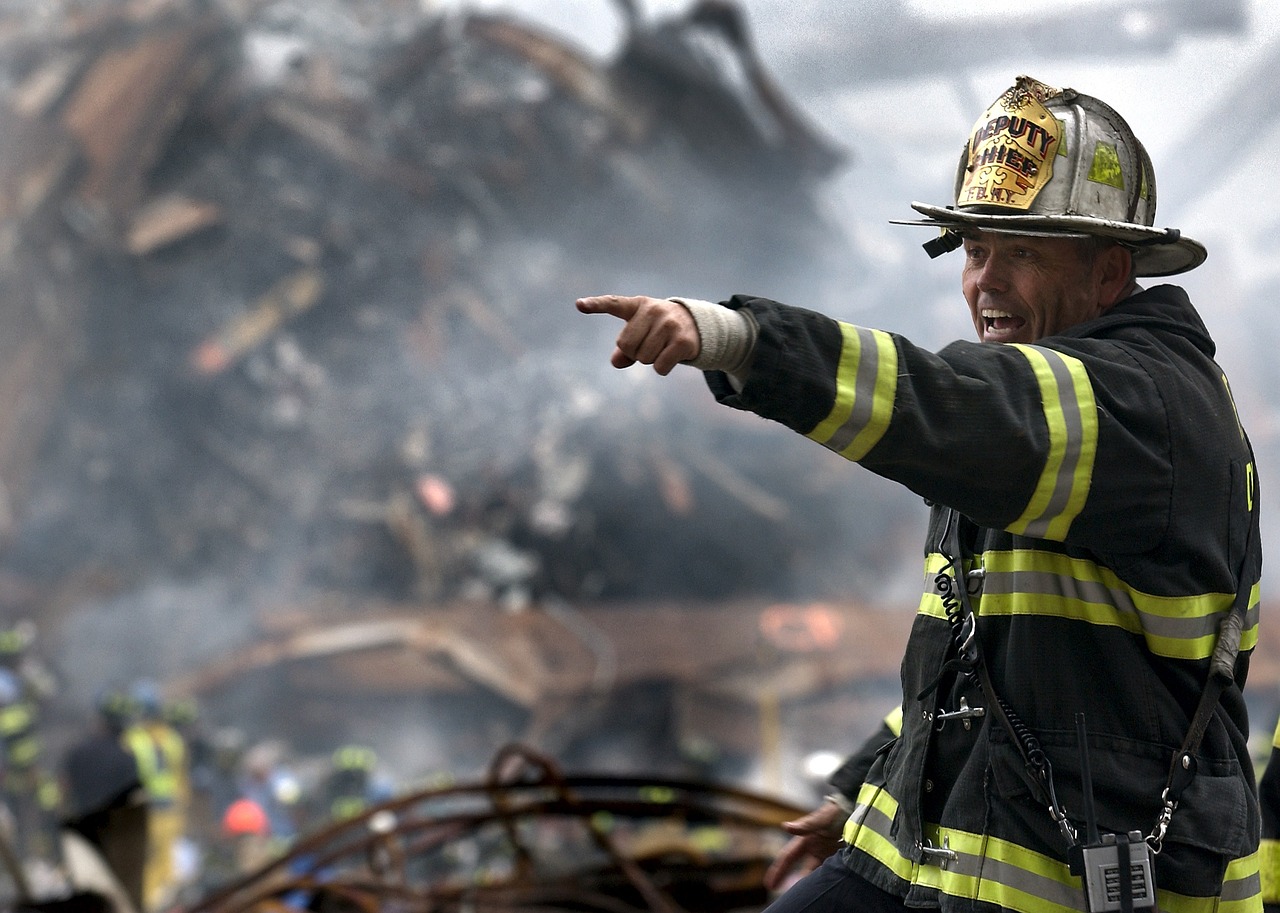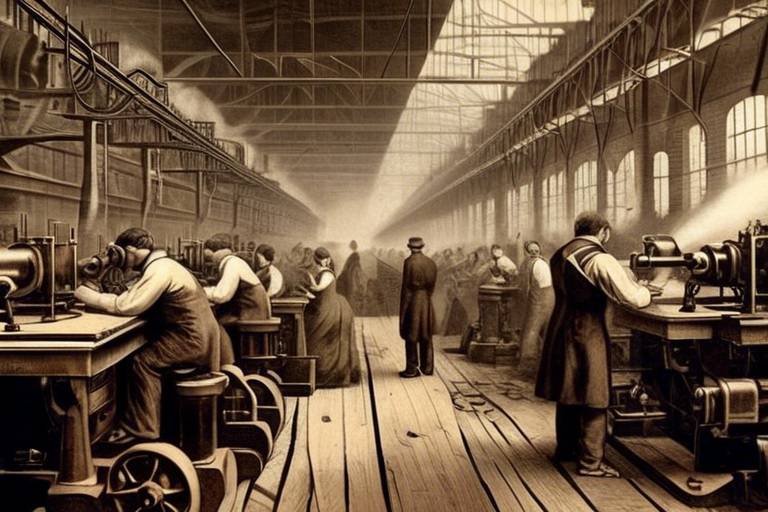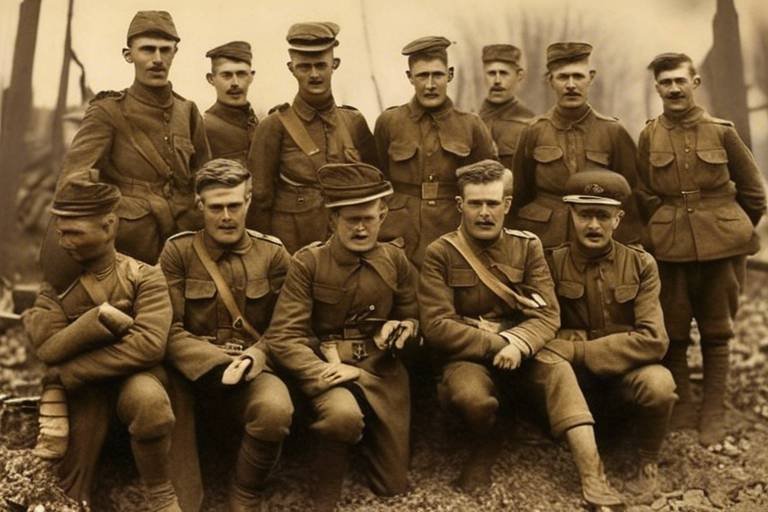The Sinking of the Titanic - Causes and Consequences
On the fateful night of April 14, 1912, the RMS Titanic, touted as the unsinkable ship, met its tragic end in a disaster that shook the world. The causes and consequences of the sinking of the Titanic continue to fascinate and haunt us, revealing a tale of hubris, tragedy, and the enduring impact on maritime history.
The Titanic's construction flaws played a significant role in its demise. The design and structural weaknesses of the ship, including compartmentalization issues and the use of inferior materials, left it vulnerable to catastrophic damage when it collided with an iceberg in the frigid waters of the North Atlantic.
The moment of impact between the Titanic and the iceberg marked the beginning of a chain of events that would lead to one of the deadliest maritime disasters in history. The collision tore a fatal gash in the ship's hull, sealing its fate and setting off a frantic struggle for survival amidst the chaos and confusion that ensued.
One of the most glaring shortcomings that emerged during the Titanic disaster was the insufficient number of lifeboats on board. With only enough lifeboats to accommodate a fraction of the passengers and crew, over 1,500 lives were tragically lost due to the lack of adequate safety measures, highlighting a stark failure in emergency preparedness.
Communication failures further compounded the tragedy, as distress signals were not promptly relayed or effectively acted upon. Misinterpretations, delays, and errors in responding to the Titanic's calls for help hampered rescue efforts and contributed to the staggering loss of life that unfolded in the icy waters that night.
In the aftermath of the sinking, stories of heroism, survival, and loss emerged as rescue efforts raced against time to save as many lives as possible. The disaster prompted a reevaluation of maritime safety protocols and sparked changes in rescue procedures and equipment to prevent such a catastrophe from recurring in the future.
The social dynamics aboard the Titanic also played a role in shaping the outcome of the disaster. Class disparities among passengers influenced evacuation procedures and survival rates, with first-class passengers given priority access to lifeboats while those in steerage faced greater obstacles in escaping the sinking ship.
The legacy of the Titanic endures as a cautionary tale that transcends time, leaving a lasting impact on maritime safety practices and cultural depictions of tragedy at sea. The disaster has inspired countless works of literature, film adaptations, and ongoing interest in the stories of those who perished and survived, ensuring that the memory of the Titanic remains etched in our collective consciousness.
Through memorials, commemorations, and continued exploration of the Titanic's wreckage, we pay tribute to the lives lost and the lessons learned from that fateful night. The sinking of the Titanic stands as a poignant reminder of the fragility of human endeavors in the face of nature's forces, serving as a solemn memorial to those who met their fate in the icy waters of the North Atlantic.

Construction Flaws
Exploring the events that led to the tragic sinking of the Titanic and the far-reaching consequences that followed in maritime safety regulations and public perception of unsinkable ships.
When delving into the construction flaws of the Titanic, it becomes evident that several critical design and structural issues played a significant role in the ship's vulnerability. One of the primary flaws was the lack of watertight compartments extending high enough above the waterline. This oversight meant that when the iceberg struck, water flooded multiple compartments, causing the ship to tilt and ultimately sink.
Additionally, the materials used in the construction of the Titanic were not up to par with modern standards. The quality of the rivets, particularly in the ship's hull, was subpar, making them more susceptible to damage upon impact. This weakness in the structure exacerbated the effects of the collision with the iceberg, leading to a rapid influx of water into the ship.
Furthermore, the decision to prioritize luxury and aesthetics over safety in the design of the Titanic also contributed to its downfall. The grand staircase and lavish interiors, while impressive, added weight and complexity to the ship, making it more challenging to evacuate passengers quickly in the event of an emergency.
Detailing the fateful encounter between the Titanic and the iceberg that sealed the ship's fate, leading to one of the deadliest maritime disasters in history.
Examining the inadequate number of lifeboats on board the Titanic, a critical factor that resulted in the loss of over 1,500 lives during the disaster.
Analyzing the communication breakdowns and errors that hindered the response to the Titanic's distress signals, contributing to the high casualty count.
Discussing the rescue efforts and the aftermath of the Titanic sinking, including the stories of survival, loss, and the impact on maritime rescue protocols.
Exploring the class disparities among passengers aboard the Titanic and how these social divisions influenced evacuation procedures and survival rates.
Evaluating the enduring legacy of the Titanic disaster, from changes in maritime safety regulations to cultural impacts on literature, film, and public perceptions of tragedy at sea.
Reflecting on the various memorials, commemorations, and ongoing interest in the Titanic story, keeping the memory of the ill-fated ship and its passengers alive in collective memory.

Iceberg Collision
Exploring the events that led to the tragic sinking of the Titanic and the far-reaching consequences that followed in maritime safety regulations and public perception of unsinkable ships.
On that fateful night, the Titanic's collision with the massive iceberg sent shockwaves through the ship, sealing its tragic fate. The iceberg, looming ominously in the dark, proved to be an insurmountable obstacle for the grand vessel. The chilling impact reverberated through the hull, setting off a chain of events that would lead to one of the deadliest maritime disasters in history.
The crew's desperate attempts to steer clear of the iceberg were in vain as the massive structure tore into the side of the Titanic, breaching its watertight compartments. The cold embrace of the icy waters rushed in, flooding the once opulent interiors with a stark reminder of nature's unforgiving power.
As the ship began to list and sink into the dark depths, panic and chaos ensued among passengers and crew alike. The collision with the iceberg marked the beginning of the end for the Titanic, setting in motion a tragedy that would forever be etched in the annals of maritime history.

Insufficient Lifeboats
Exploring the events that led to the tragic sinking of the Titanic and the far-reaching consequences that followed in maritime safety regulations and public perception of unsinkable ships.
When examining the catastrophic sinking of the Titanic, one of the glaring issues that contributed significantly to the high loss of life was the insufficient number of lifeboats on board. Despite being touted as a marvel of modern engineering, the Titanic was equipped with a woefully inadequate number of lifeboats, a mere 20 for a ship designed to accommodate over 2,200 passengers and crew.
This critical oversight stemmed from the outdated maritime regulations of the time, which dictated lifeboat capacity based on a ship's tonnage rather than its actual passenger capacity. As a result, the Titanic fell short of providing enough lifeboats to ensure the safe evacuation of all those on board in the event of an emergency.
As the ill-fated ship began to sink after striking the iceberg, the limited number of lifeboats became a stark reality, leading to chaotic scenes of panic and desperation as passengers and crew scrambled for limited spots in the available lifeboats. The shortage of lifeboats directly contributed to the staggering loss of over 1,500 lives, highlighting the dire consequences of inadequate safety measures in maritime travel.
1. What were the regulations regarding lifeboats on ships during the time of the Titanic's sinking?
2. How did the shortage of lifeboats impact the evacuation efforts during the Titanic disaster?
3. What changes in maritime safety regulations were implemented following the Titanic tragedy to address the issue of insufficient lifeboats?
4. How did the class distinctions among passengers affect access to lifeboats during the Titanic disaster?
5. Are there any lessons learned from the Titanic's insufficient lifeboats that are still relevant in maritime safety today?

Communication Failures
Exploring the events that led to the tragic sinking of the Titanic and the far-reaching consequences that followed in maritime safety regulations and public perception of unsinkable ships.
Investigating the design and construction flaws of the Titanic that contributed to its vulnerability and ultimate sinking in the icy waters of the North Atlantic.
Detailing the fateful encounter between the Titanic and the iceberg that sealed the ship's fate, leading to one of the deadliest maritime disasters in history.
Examining the inadequate number of lifeboats on board the Titanic, a critical factor that resulted in the loss of over 1,500 lives during the disaster.
Analyzing the communication breakdowns and errors that hindered the response to the Titanic's distress signals, contributing to the high casualty count.
Discussing the rescue efforts and the aftermath of the Titanic sinking, including the stories of survival, loss, and the impact on maritime rescue protocols.
Exploring the class disparities among passengers aboard the Titanic and how these social divisions influenced evacuation procedures and survival rates.
Evaluating the enduring legacy of the Titanic disaster, from changes in maritime safety regulations to cultural impacts on literature, film, and public perceptions of tragedy at sea.
Reflecting on the various memorials, commemorations, and ongoing interest in the Titanic story, keeping the memory of the ill-fated ship and its passengers alive in collective memory.
Communication failures played a significant role in the tragedy of the Titanic. Despite receiving warnings about icebergs from other ships, the crew failed to take adequate precautions. The distress signals sent out by the Titanic were not properly interpreted or responded to promptly, leading to delayed rescue efforts. This breakdown in communication ultimately contributed to the high number of casualties.

Rescue Efforts
When the Titanic struck the iceberg on that fateful night, the ensuing chaos and panic set off a chain of events that would test the limits of human courage and resilience. As the ship began to sink into the icy waters of the North Atlantic, the crew and passengers faced a race against time to secure a spot on the limited number of lifeboats available.
Despite the overwhelming nature of the disaster, the that followed showcased the best of humanity in the face of unimaginable tragedy. The crew worked tirelessly to launch the lifeboats, prioritizing women and children first in a desperate bid to save as many lives as possible.
Amidst the chaos and confusion, acts of heroism emerged as individuals selflessly helped others to safety, embodying the spirit of solidarity and compassion in the face of adversity. The survivors' accounts paint a vivid picture of the harrowing ordeal they endured, from the chilling cold of the ocean to the haunting sounds of the ship's final moments.
As the Carpathia arrived on the scene to rescue the survivors, hope was reignited in the midst of despair. The sight of the rescue ship brought a glimmer of light in the darkness, offering a lifeline to those who had clung to wreckage or lifeboats in a desperate bid for survival.
The aftermath of the Titanic sinking saw a wave of grief and mourning sweep across the world, as the scale of the tragedy became apparent. Families waited anxiously for news of their loved ones, while communities came together to support those who had lost everything in the disaster.
The legacy of the on that fateful night continues to resonate through the annals of maritime history, serving as a poignant reminder of the fragility of human life and the resilience of the human spirit in the face of adversity.

Passenger Class Disparities
Exploring the events that led to the tragic sinking of the Titanic and the far-reaching consequences that followed in maritime safety regulations and public perception of unsinkable ships.
On the ill-fated voyage of the Titanic, the stark disparities among passengers based on their social class became evident in the face of disaster. The ship was divided into different classes, each with distinct accommodations and privileges. First-class passengers enjoyed luxurious amenities, spacious cabins, and prompt attention from the crew. In contrast, third-class passengers, mainly immigrants seeking a better life in America, were housed in cramped quarters below deck.
When the Titanic struck the iceberg, the class divide played a significant role in evacuation procedures. First-class passengers were given priority access to lifeboats, with crew members ensuring their safety first. Meanwhile, third-class passengers faced obstacles in reaching the lifeboats, encountering locked gates and language barriers that hindered their escape.
The survival rates among passengers varied greatly based on their class. The majority of first-class passengers were rescued, while a significant number of third-class passengers perished in the frigid waters. The tragic reality of the Titanic disaster highlighted the inequalities and injustices that existed within society at the time, sparking debates on social reform and equal treatment in times of crisis.
Despite the heroism displayed by some individuals who prioritized saving lives regardless of class, the passenger class disparities aboard the Titanic remain a poignant reminder of how privilege and status can impact survival outcomes in the face of catastrophe.

Legacy of the Titanic
The sinking of the Titanic left a lasting legacy that reverberates through history, shaping maritime safety practices and cultural perceptions of tragedy at sea. The disaster prompted significant changes in shipbuilding regulations and safety protocols, leading to the implementation of stricter standards to prevent similar catastrophes in the future. The Titanic's tragic fate served as a stark reminder of the hubris of considering any vessel unsinkable, challenging the prevailing arrogance of the time.
Moreover, the legacy of the Titanic extends beyond the realm of maritime safety, influencing art, literature, and popular culture for generations to come. The story of the ill-fated ship has inspired numerous books, films, and documentaries, each offering a unique perspective on the events leading up to the disaster and its aftermath. The Titanic has become a symbol of human ambition and its tragic consequences, capturing the imagination of people worldwide.
In addition to its cultural impact, the Titanic disaster sparked a wave of memorialization and commemoration efforts aimed at honoring the memory of the lives lost on that fateful night. From solemn ceremonies to dedicated museums, the Titanic continues to be remembered and revered as a poignant symbol of both human ingenuity and frailty. The legacy of the Titanic serves as a cautionary tale, reminding us of the importance of humility in the face of nature's unforgiving forces.

Memorials and Commemorations
Memorials and commemorations play a significant role in keeping the memory of the Titanic disaster alive in the collective consciousness. Across the world, various memorials stand as solemn reminders of the lives lost on that fateful night. One of the most well-known memorials is the Titanic Memorial in Washington, D.C., which honors the passengers and crew who perished in the tragedy. The memorial features a granite statue of a male figure with outstretched arms, symbolizing the sorrow and loss experienced by the Titanic's victims and their families.
In Belfast, Northern Ireland, where the Titanic was built, the Titanic Belfast museum stands as a tribute to the ship and its legacy. The museum offers visitors a comprehensive look at the construction of the Titanic, the lives of its passengers and crew, and the events leading up to the disaster. Through interactive exhibits and artifacts recovered from the wreck site, the museum provides a poignant glimpse into the tragic history of the ill-fated ship.
Every year, on the anniversary of the Titanic's sinking, commemorations take place around the world to honor the memory of those who lost their lives. From memorial services to special exhibitions and educational programs, these events serve as a reminder of the human cost of the disaster and the importance of remembering the past. The sinking of the Titanic continues to captivate the public imagination, inspiring ongoing efforts to preserve its history and ensure that the stories of those onboard are never forgotten.
Frequently Asked Questions
- What were some of the key design flaws of the Titanic?
The Titanic had several design flaws, including compartmentalization that did not extend high enough, making it vulnerable to flooding, as well as the use of inferior materials in some parts of the ship's construction.
- How did the collision with the iceberg impact the sinking of the Titanic?
The collision with the iceberg caused extensive damage to the Titanic's hull, leading to multiple compartments being breached and allowing water to flood in, ultimately contributing to the ship's rapid sinking.
- Why were there not enough lifeboats on board the Titanic?
The Titanic was not equipped with an adequate number of lifeboats due to outdated maritime regulations that did not account for the ship's size, leading to a tragic shortage of life-saving equipment during the disaster.
- How did social class affect the evacuation process on the Titanic?
Social class played a significant role in the evacuation process, with first-class passengers given priority access to lifeboats, while third-class passengers faced barriers such as locked gates and lack of clear instructions, impacting survival rates.
- What changes in maritime safety regulations were implemented following the Titanic disaster?
The Titanic disaster prompted significant changes in maritime safety regulations, including requirements for more lifeboats, better training for crew members, and improved communication systems to enhance emergency response capabilities.



















